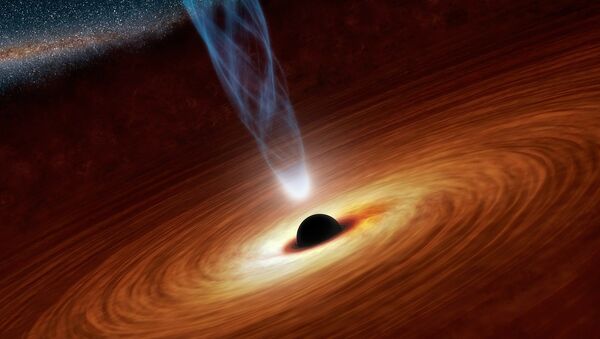New Delhi (Sputnik) — Astronomers from India's National Centre for Radio Astrophysics (NCRA) have discovered the closest ever binary supermassive black hole system in a spiral galaxy named NGC 7674 also called Markarian 533.
The two supermassive black hole system; separated by less than a light year, is located about 400 million light-years from earth. The combined mass of the system is about 40 million times that of the sun with an orbital period of about 100,000 years. Astronomers are delighted over the discovery of the binary supermassive black hole that is separated by approximately 0.35 parsecs which is the smallest gap between two black holes of a binary system ever detected through direct imaging.
"This discovery is very significant because this is a direct observational proof of the existence of close supermassive black hole binary systems inside galaxies, which are potential sources of gravitational waves," Dharam Vir Lal, co-authored of the research from NCRA-TIFR, Pune told Sputnik.
The discovery was led by Preeti Kharb of NCRA while David Merritt, professor of physics at Rochester Institute of Technology in New York is the second co-author of the research.
Brar, Lal & Merritt have used a technique called very long baseline interferometry (VLBI), in which separate radio telescopes around the world can work together as a single large telescope, achieving an angular resolution of milli- or microarcseconds — roughly ten million times the angular resolution of the human eye.
"A supermassive binary generates gravitational waves with much lower frequency than the characteristic frequency of stellar-mass binaries and its signal is undetectable by LIGO," Merritt explained.
The biggest ever pair of detected orbiting supermassive black holes have a mass of about 15 billion times that of the sun and are located 750 million light-years away.




